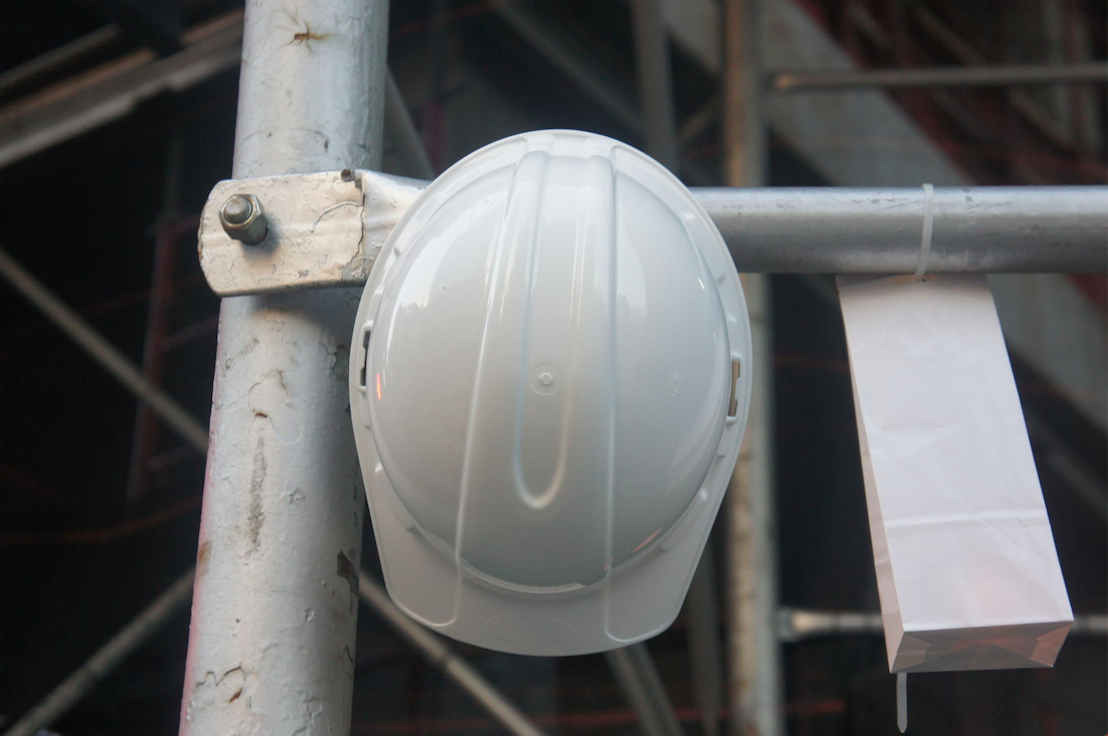New York, NY – This past week, the mournful wail of bagpipes honoring New York City construction workers killed or injured on the job were once again forced to compete with the rising lamentations of deep pocketed industry executives bemoaning the economic costs of enacting enhanced safety regulations.

Never mind how incremental and insufficient any of those enhanced safety regulations might actually be — the men in Brooks Brothers suits continue to gnash their teeth and stamp their feet like the self-interested and entitled brats they are, insisting that construction projects uptown, downtown, eastside, westside and all across the “outer” boroughs, will be delayed or — watch out — shelved altogether!
Soon, they’ll hold up murdered Canada geese strangled in Prospect Park or maybe Van Cortland Park, and warn weak willed worker advocates that advancing measures to safeguard human life threaten to “kill the golden goose.”
Meanwhile, you know, somebody’s father or brother just won’t come home at the end of the day and entire families will be irreparably damaged. Check that — more often than not, it is black or brown families, specifically, that will be irreparably damaged.
The bagpipes started early this year when somber trade unionists gathered at Broome and Varick streets to mourn the death of a military veteran and father of four killed while helping to erect a 25-story luxury condominium working class heroes like him could never even afford to live.
Gregory Echevarria, 34, spent a decade fighting this nation’s never-ending wars in Iraq and Afghanistan, but couldn’t find a job when he came back home. Childhood pal Donald Nesbit, Local 372 vice-president, told LaborPress Gregory “came home to nothing.”
Echevarria’s cruel death was the third construction worker fatality in a single week. Twenty-three-year-old Erik Mendoza and 51-year-old Nelson Salinas also died on the job the same week.
A few days after the Broome and Varick streets memorial, Gary LaBarbera, head of the Building and Construction Trades Council of Greater New York, stood on the steps of City Hall helping to push passage of “Carlos’ Law” in the New York State Legislature.
Introduced two years ago, “Carlos’ Law” seeks, in some cases, to increase the fines levied against negligent developers held culpable in the deaths of workers from $10,000 to a more meaningful $500,000.
Then Assembly Member Francisco Moya’s bill honors the life of Carlos Moncayo — a 22-year-old Ecuadoran emigre who died horribly on a Manhattan construction site in April, 2015.
Labor Law 196, another safety measure — this one mandating additional hours of safety training — was enacted in 2017, but has yet to be fully implemented.
“I’m tired of standing at press conferences…I’m tired of attending vigils — I don’t want to do that anymore,” a frustrated LaBarbera said at City Hall.
The ongoing struggle to pass “Carlos’ Law,” fully implement Labor Law 196 and also defend New York’s “Scaffold Law,” epitomizes the systemic battle pitting the economic elite against working men and women.
One of the many problems with that paradigm, however, is that the stakes are not at all equal. Allow, for a moment, that enhanced safety measures are actually threatening economic growth. Even if that were true — and it’s not — so what?
The National Council For Occupational Safety And Health reports that, since 2012, workplace fatalities have increased by 11-percent.
What do the rich stand to lose — being less rich? The so-called “entrepreneurial class” and “job creators” will tell you that they are the real risk takers. But what are they risking really? The real risk takers are the shattered working men and women who can lose everything on a single bad day.
NYCOSH’s latest annual statewide report on construction fatalities, further finds that “workers die as a result of employer’s disregard for workers’ health and safety” — noting the “difference between construction fatality numbers on union versus non-union job sites, proving that unionized construction jobs keep New York’s workers safer.”
A few years ago, The Real Deal quoted Yoel Borgenicht, president of King Rose Construction, saying, “Anytime the regulatory environment becomes more complex, it slows things down” —and that safety “comes with a cost.”
So you say. But the scales are not equal. The risks are not the same. Why should anybody care more about guys who might lose their shirts, rather than people who stand to lose their very lives?
There’s sure to be another monogrammed button down in the drawer — a whole lot of them, in fact. The same can’t be said for the family who will never again see their special loved one come home.



